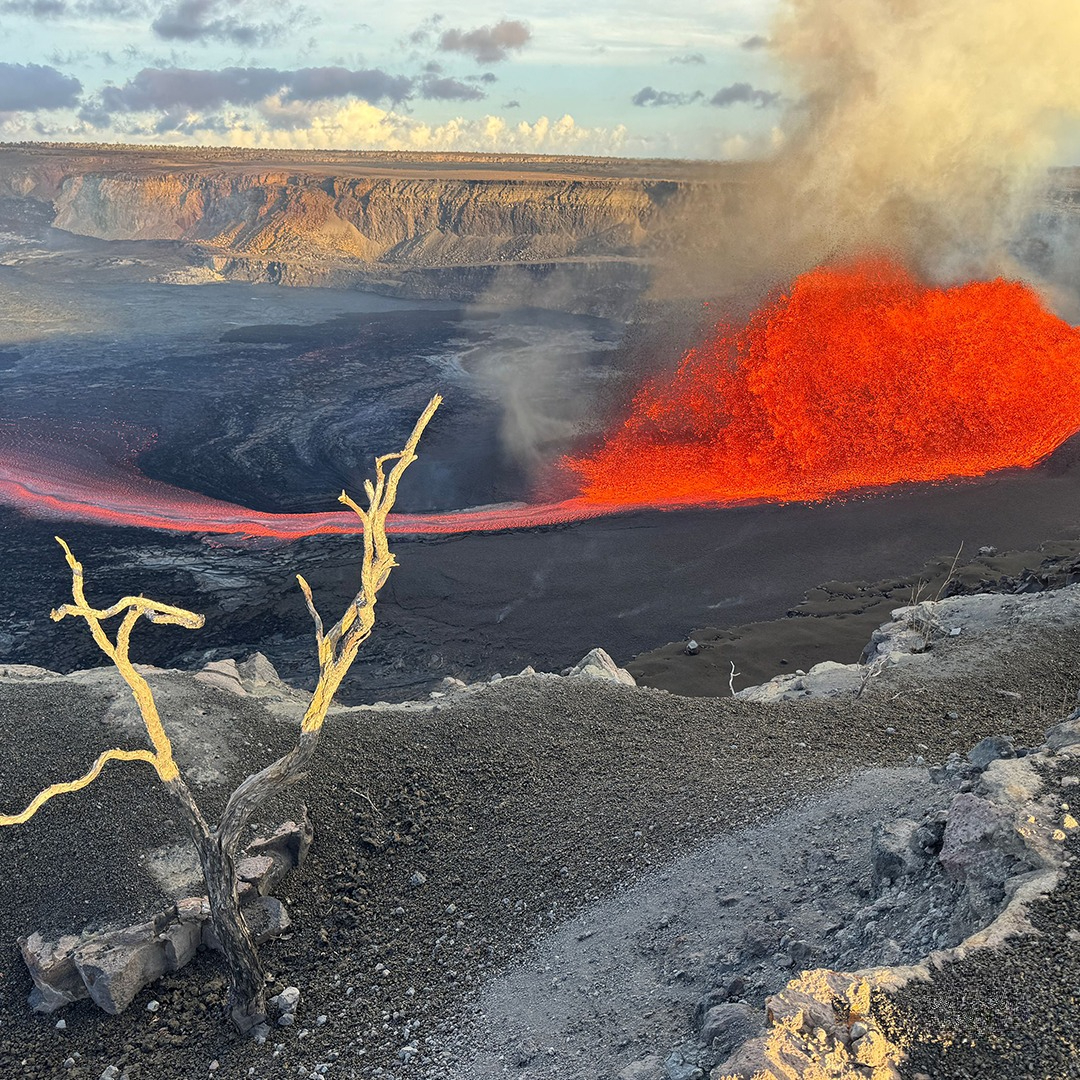Hawaii’s Kilauea volcano, one of the most active volcanoes in the world, erupted again on Friday, marking its 31st eruption since December and once more turning its summit into a fiery display of molten rock and glowing fountains. This latest eruption sent arcs of lava soaring 100 feet into the air from Halemaʻumaʻu Crater, a sight that thrilled residents, scientists, and visitors alike.

The north vent at the summit crater began spattering continuously in the morning, followed by lava overflowing onto the crater floor just a few hours later, and by the afternoon, the vent had erupted into full fountains. Fortunately, this activity remains contained within the summit crater, and no nearby homes or communities are threatened, though the natural spectacle continues to attract both in-person crowds and virtual viewers tuning into livestreams set up by the U.S. Geological Survey. Park volunteer Janice Wei, who rushes to the site whenever the volcano comes alive, described the sound of the fountains as resembling either a roaring jet engine or crashing waves.
She noted that the heat from the molten rock can be felt from over a mile away and that each eruption feels like sitting in the front row of nature’s greatest show. Kilauea sits on Hawaii Island, the largest island in the state, about 200 miles south of Honolulu, and it has fascinated geologists and locals for centuries not only for its activity but also for its cultural significance, with Native Hawaiian tradition identifying the crater as the home of Pele, the volcano goddess.
According to Ken Hon, the scientist-in-charge at the Hawaiian Volcano Observatory, magma is flowing into a lower chamber beneath Halemaʻumaʻu at a rate of roughly five cubic yards per second. This chamber inflates like a balloon until magma is forced upward into a higher chamber and then pushed through cracks to the surface, resulting in lava fountains. Because magma carries gases that are released during its rise, the buildup of pressure creates dramatic bursts that sometimes reach more than 1,000 feet into the sky.
Scientists explain that heavier magma that has already expelled its gases from earlier episodes caps the fresh magma below until enough new supply builds up to push it through, releasing it suddenly much like popping the cork on a shaken Champagne bottle. This is only the fourth time in the past 200 years that Kilauea has erupted in repeated lava fountaining episodes. A similar pattern occurred during the famous eruption that began in 1983, which started with 44 fountain episodes before transitioning into a continuous eruption that lasted 35 years until it ended in 2018. Earlier cycles of this kind were recorded in 1959 and 1969.
What makes the current eruptions so fascinating is not only their frequency but also their unpredictability. Scientists cannot say for sure how long this cycle will last or how it might evolve. They note that in the past, pressure eventually built enough to open vents at lower elevations, allowing magma to escape continuously instead of episodically, creating long-lasting flows that reshaped landscapes and destroyed communities. At the same time, it is possible that the current activity may stop altogether if the magma supply weakens. Instruments around the volcano detect earthquakes and subtle shifts in the ground’s angle to give scientists some advance warning, but as Hon explained, studying a volcano is like being ants crawling on an elephant, trying to make sense of its movements.
Recent fountains have been shorter than some earlier episodes, which University of Hawaii geology professor Steve Lundblad attributes to widening vents that release lava with less pressure. Still, he says, the eruptions remain spectacular even if the fountains are broader rather than taller. While scientists track the geology, cultural practitioners like Huihui Kanahele-Mossman of the Edith Kanakaʻole Foundation emphasize the deep meaning of the eruptions to Native Hawaiians.
To her, lava is not just destructive—it is a resource that builds new land and serves as the foundation of life on the island. Her nonprofit, named after her grandmother who was a leader in preserving Hawaiian culture and hula traditions, ties the eruptions to stories of Pele and Hiʻiaka that are carried on through mele, or songs. She visits the crater to observe details of the eruptions, compare them with ancient chants, and make offerings such as awa and fern lei. For Kanahele-Mossman and her hula school, being able to witness eruptions described in centuries-old songs is both inspiring and motivating, keeping their traditions alive.
The eruption has also brought a surge in tourism. Hawaii Volcanoes National Park has seen visitation climb steadily all year, with April recording nearly 50% more visitors than the same month in 2024. Park officials, however, caution visitors to remain safe, noting that eruptions often last only 10 to 12 hours, making timing critical for those hoping to see the spectacle. Visitors are urged to stay on marked trails and overlooks, as hidden cracks and unstable cliffs can cause fatal accidents.
Volcanic gas, ash, and tiny glass-like particles can also pose health risks, and nighttime visitors are advised to bring flashlights to safely navigate the park. While eruptions like this one may be fleeting, they are reminders of the raw power of nature and the ongoing story of Hawaii’s landscape. For scientists, each fountain adds to understanding one of the planet’s most studied volcanoes. For Hawaiians, it deepens cultural connections to Pele and the island’s heritage. And for tourists, it is an unforgettable glimpse into the earth’s fiery heart.





